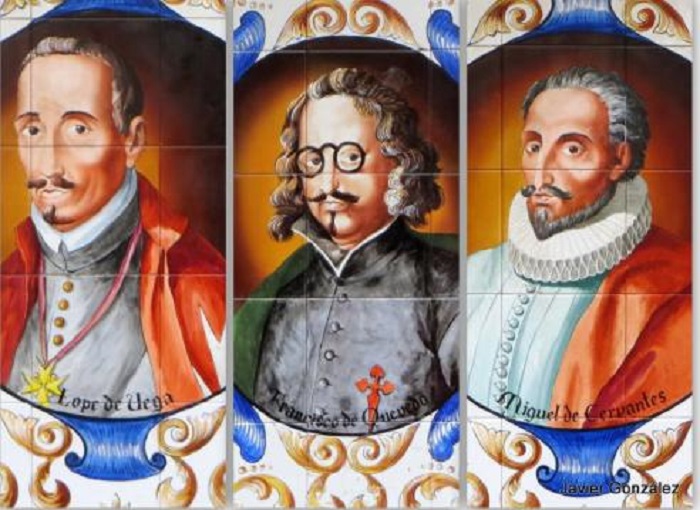In the tapestry of global literature, Spain stands out with its vibrant threads of poetic verses, dramatic tales, and profound narratives. The Iberian Peninsula, with its rich history and diverse culture, has been the cradle of literary geniuses whose works have transcended borders and time. From the cobblestone streets of Seville to the bustling plazas of Madrid, the spirit of these literary maestros can be felt, echoing their tales of passion, tragedy, and triumph. This piece delves into the lives and legacies of some of Spain’s most iconic writers, offering readers a journey through the annals of Spanish literature.


Martina Rodriguez
“Spanish Literature is my favourite”
- A Thousand Years of Spanish Literature: From Medieval Jarchas to Modernist Movements
- Looking to Learn Spanish? We’ve Got You Covered
- The Literary Generations of Spain: A Confluence of Thought and Expression
- The Masters: Top 5 Spanish Authors
- Spanish Contemporary Literary Titans: Voices of the Modern Era
- The Influence of Society and Politics on Spanish Literature: A Deep Dive into Historical Interplay
- FAQs about Spanish Literature
- The Dominance of Novels and Plays: Spain’s Preferred Literary Forms
A Thousand Years of Spanish Literature: From Medieval Jarchas to Modernist Movements
The history of Spanish literature is a rich tapestry that spans centuries, reflecting the socio-political and cultural shifts of Spain.
The Medieval Period
Stretching from the 10th to the 15th century, saw the evolution of language from Latin to early forms of Spanish. This era was dominated by the oral tradition, with many works passed down by wandering performers. Religious themes were prevalent, and prose often contained moral tales or lessons. Notable figures from this period include Gonzalo de Berceo, Juan Ruiz, and Fernando de Rojas.
The Renaissance
In the 16th century marked a renewed interest in Greco-Roman classics. This period was characterized by humanism, emphasizing human values and experiences. The influence of Italian poetic forms was evident, with Garcilaso de la Vega leading the way. Other significant authors from this era include Fray Luis de León, Santa Teresa de Jesús, and the unparalleled Miguel de Cervantes with his magnum opus, “Don Quijote de la Mancha.”
The Baroque Period
The 17th century ushered in the Baroque Period, known for its complexity and contrasts. Literature of this time explored themes of beauty and ugliness, life and death. Two dominant poetic trends, Culteranismo and Conceptismo, emerged, emphasizing ornate language and witty concepts. Luis de Góngora, Francisco de Quevedo, and Lope de Vega were luminaries of this epoch.
Looking to Learn Spanish? We’ve Got You Covered
The Best Intensive Spanish Classes in the World’s Top Cities
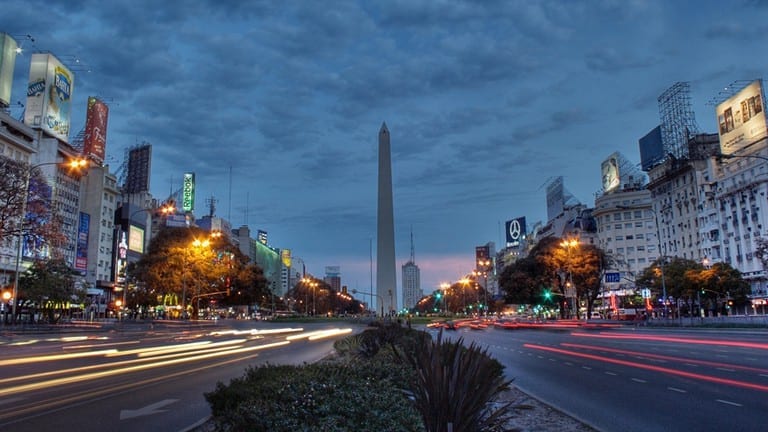

Buenos Aires: Great City, Great Classes.
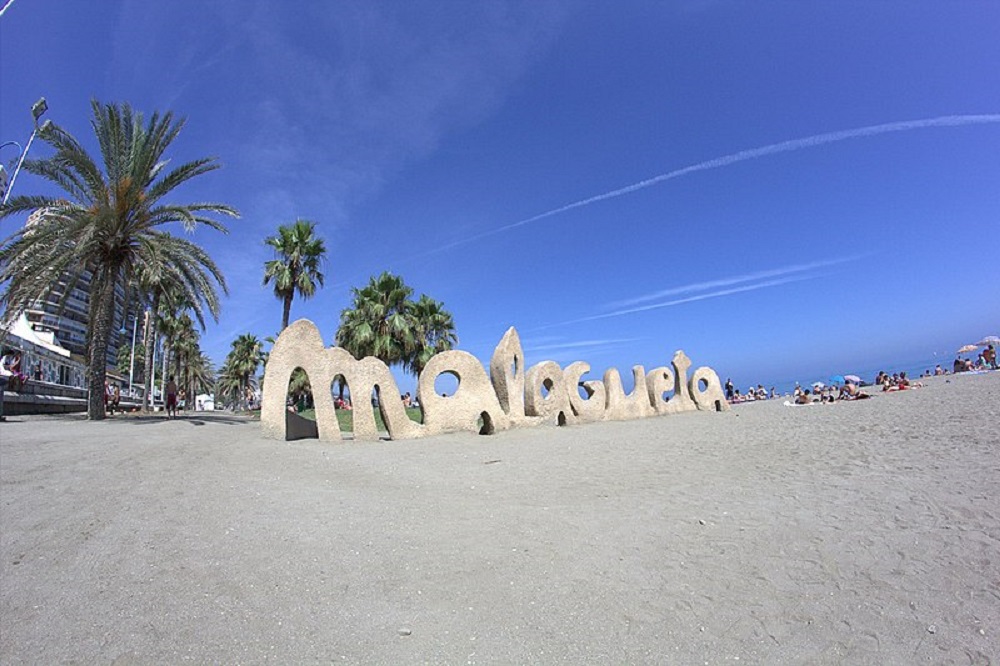

Malaga: Where Study Meets the Beach.
Embark on Your Spanish Classes Today: Click Here


Your Own City: Online Classes.
Embark on Your Online Spanish Classes: Click Here
The Enlightenment
In the 18th century emphasized rational thought and logic. Literature returned to Greco-Roman styles, and there was a strong focus on moral and social criticism. Feijoo, Jovellanos, and Leandro Fernández de Moratín were key figures of this period.
Romanticism
The 19th century was marked by Romanticism, emphasizing personal feelings, emotions, and a connection to nature. This era saw a break from classical rules, with authors like Gustavo Adolfo Bécquer, Rosalía de Castro, and José Zorrilla leading the charge.
Realism and Modernism
As the 19th century transitioned into the 20th, Realism took center stage, offering a detailed depiction of everyday life and societal issues. This was soon followed by Modernism, which broke from traditional forms and explored new styles. Benito Pérez Galdós, Rubén Darío, Antonio Machado, and Juan Ramón Jiménez were notable authors from this period.
Within the 20th century, specific literary groups, known as “generations,” emerged. The Generation of ’98, active around the time of the Spanish-American War, critically approached Spanish society and culture. Antonio Machado, Pío Baroja, and Ramón María del Valle-Inclán were central figures. Later, the Generation of ’27 arose, blending traditional and avant-garde themes. This group included luminaries like Federico García Lorca, Vicente Aleixandre, and Luis Cernuda.
This journey through Spanish literature’s epochs reveals a dynamic evolution, with each period contributing uniquely to the nation’s rich literary heritage.
The Literary Generations of Spain: A Confluence of Thought and Expression
In the realm of Spanish literature, the term “generation” refers to a group of writers, poets, and thinkers who emerged around the same time, sharing similar ideologies, styles, and often reacting to specific historical or cultural events. These generations, while distinct in their characteristics, collectively contribute to the rich tapestry of Spanish literary history.
Generation of ’98
This generation emerged at the turn of the 20th century, during a time of political and social crisis in Spain, particularly the Spanish-American War’s aftermath. The name ’98 is derived from the year 1898, marking Spain’s defeat and the loss of its last significant overseas territories. The writers of this generation were characterized by their introspective approach, a deep sense of national identity, and a desire to rejuvenate Spanish traditions. They critically examined Spain’s decline and sought a cultural rebirth. Notable figures include Antonio Machado, known for his reflective poetry; Pío Baroja, who critiqued society through his novels; and Ramón María del Valle-Inclán, whose works often depicted a distorted reality.
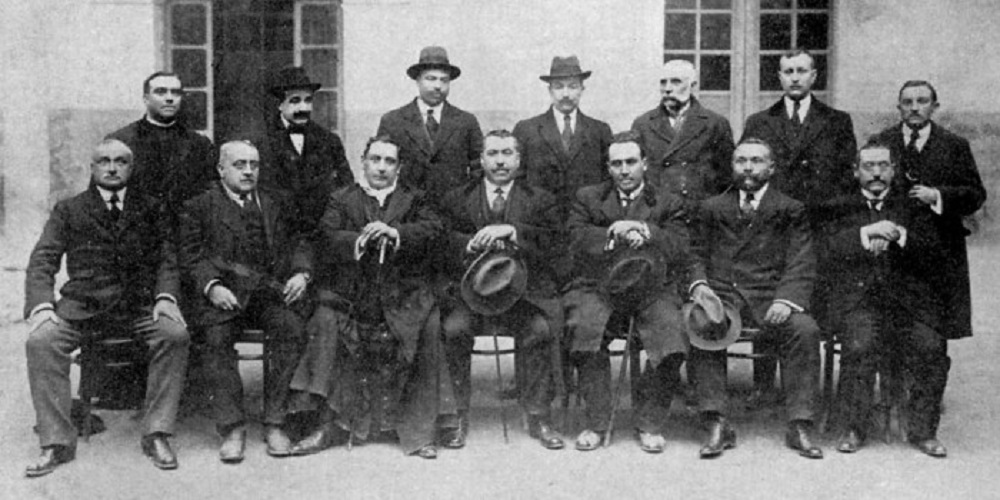

Generation of ’14
Also known as the “Novecentismo,” this generation was more European in its outlook, emphasizing reason over emotion and focusing on precision and clarity. They were influenced by modern European movements and were often more scientific and philosophical in their approach. Key figures include José Ortega y Gasset, a philosopher and essayist, and Juan Ramón Jiménez, a poet who later influenced the Generation of ’27.
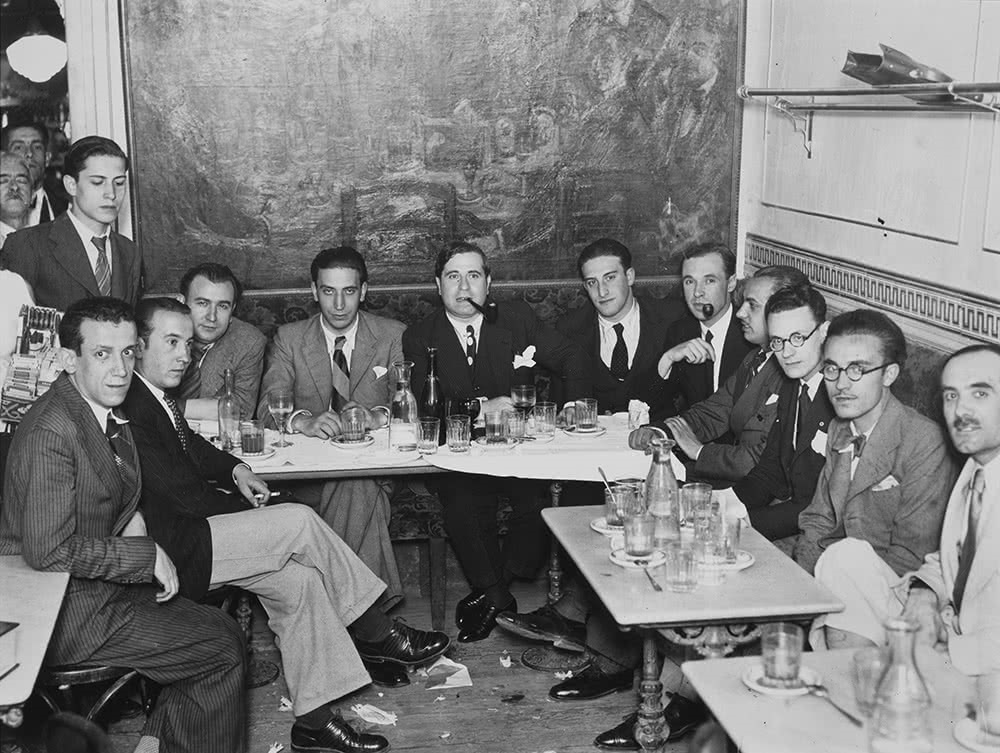

Generation of ’27
This generation is perhaps the most celebrated in Spanish literary history. Emerging in the 1920s, they were a diverse group of poets, writers, and artists. While they embraced avant-garde European movements like Surrealism, they also deeply respected Spanish literary traditions. Their works often melded traditional forms with innovative techniques. The group is named after the year 1927, marking the 300th anniversary of the death of the Baroque poet Luis de Góngora, an event they collectively celebrated. Central figures of this generation include Federico García Lorca, known for his tragic plays and profound poetry; Vicente Aleixandre, a Nobel laureate; and Luis Cernuda, whose works often explored themes of love and existentialism.
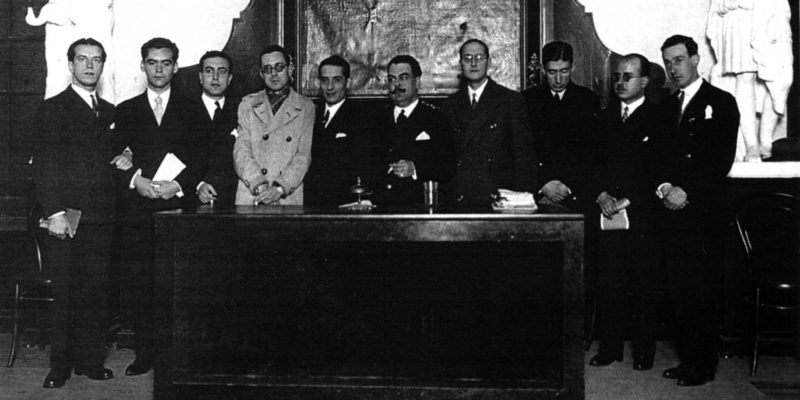

Generation of ’36
This generation was deeply affected by the Spanish Civil War. Their works often reflect the trauma, chaos, and ideologies of the time. While some supported the Republicans and others the Nationalists, all were profoundly shaped by the war’s events. Notable authors include Miguel Hernández, a poet who died young in a Francoist jail, and Laforet’s Carmen, known for her novel “Nada.”


The Masters: Top 5 Spanish Authors
Miguel de Cervantes: The Luminary of Spanish Literature
Miguel de Cervantes Saavedra, born in 1547 in Alcalá de Henares, Spain, stands as a monumental figure in the world of literature. His life, marked by adventures, hardships, and an indomitable spirit, mirrors the vibrant characters he created in his writings.
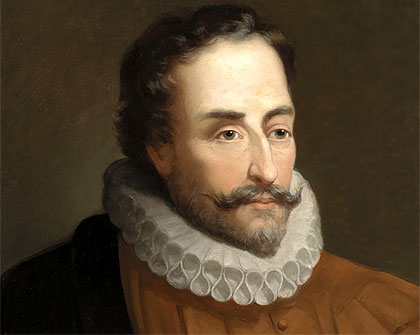

Cervantes’ early life was nomadic. His family moved frequently due to financial difficulties. This constant movement exposed him to the diverse cultures and people of Spain, which would later influence his writings. In his youth, he moved to Madrid, where he began his literary journey, publishing poems and attending the university.
However, the adventurous spirit of Cervantes led him away from academia. He enlisted as a soldier in the Spanish Navy Marines and fought valiantly in the Battle of Lepanto in 1571, where he sustained injuries that rendered his left hand almost useless. But this setback didn’t deter him. He continued his military service, traveling across the Mediterranean.
In 1575, misfortune struck. While returning to Spain, his ship was captured by Barbary pirates, and Cervantes, along with his brother, was taken as a slave to Algiers. For five harrowing years, he remained in captivity, making several unsuccessful escape attempts. His resilience during these trials earned him the respect of both fellow captives and his captors. Finally, in 1580, he was ransomed and returned to Spain.
Back in his homeland, Cervantes faced a life of financial struggles and took up various jobs, from tax collector to purchasing agent for the Spanish Armada. But amidst these challenges, his passion for writing never waned.
Cervantes’ writing style is a blend of realism and imagination. He had an uncanny ability to create characters that were both grounded in reality and larger than life. His narratives often blurred the lines between fiction and reality, making readers question the nature of truth and illusion.
This duality is most evident in his magnum opus, “Don Quixote.” Published in two parts, in 1605 and 1615, this novel is often hailed as the first modern novel. It tells the tale of a delusional Spanish nobleman, Don Quixote, and his loyal squire, Sancho Panza, as they embark on a series of misadventures across Spain. Quixote, having read too many chivalric romances, believes himself to be a knight and sets out to revive chivalry and rectify wrongs. The novel is both a parody of the romantic chivalric tradition and a commentary on the transformative power of literature.
“Don Quixote” is a masterclass in storytelling. Cervantes employs metafiction, where the characters are aware they are being written about, adding layers of complexity to the narrative. The interplay between the idealistic Quixote and the pragmatic Sancho Panza offers profound insights into human nature, dreams, and reality.
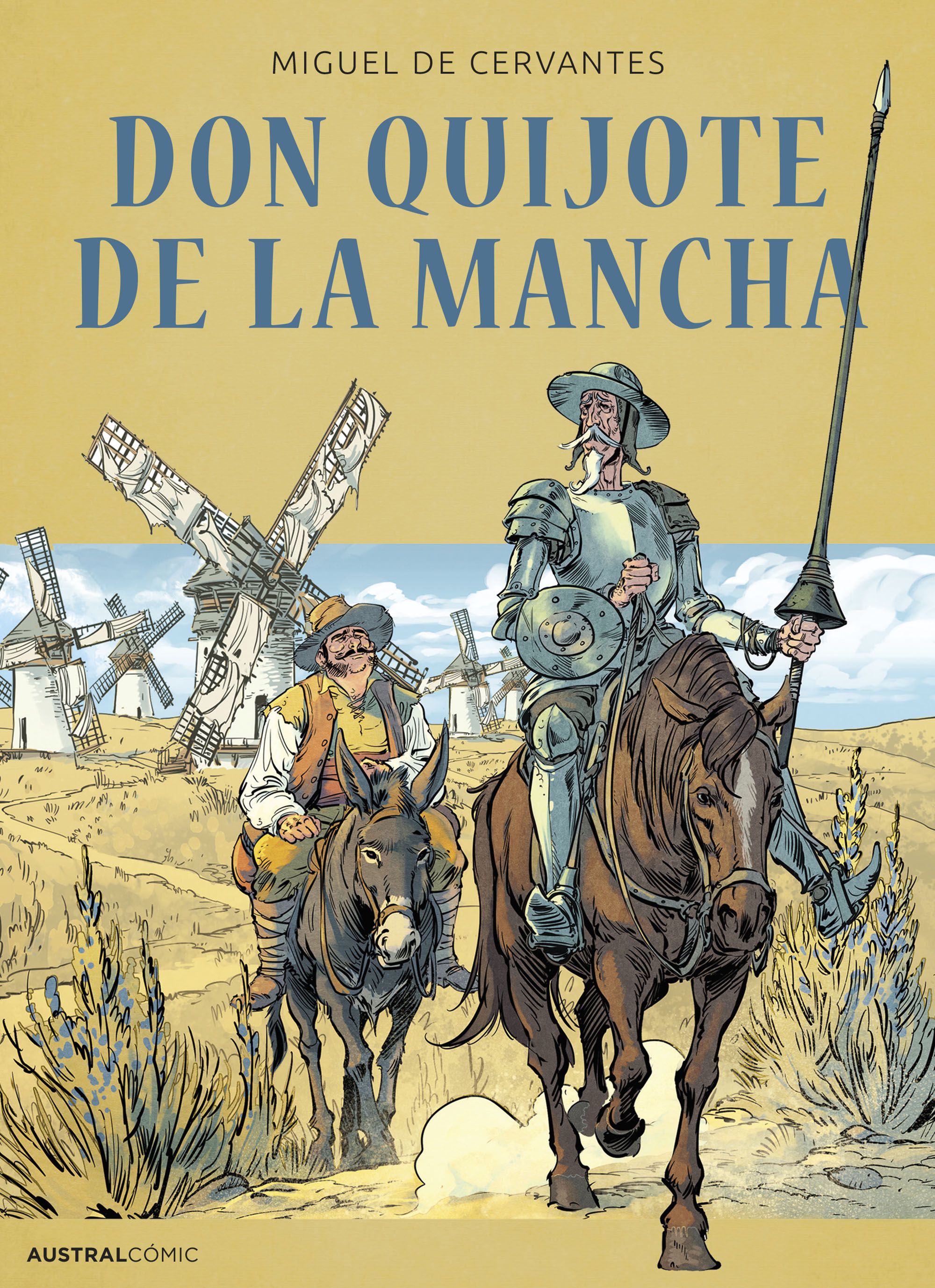

Beyond “Don Quixote,” Cervantes wrote numerous other works, including “Novelas Ejemplares,” a collection of short stories, and plays. However, it is “Don Quixote” that immortalized him, influencing generations of writers, from Dostoevsky to Faulkner.
Miguel de Cervantes passed away in 1616, but his legacy is eternal. His life, marked by trials and tenacity, and his writings, a blend of realism and fantasy, make him a timeless figure, forever enshrined in the annals of literary history.
Federico García Lorca: The Poet of the Andalusian Soul
Federico García Lorca, born in 1898 in Fuente Vaqueros, Granada, stands as one of Spain’s most iconic poets and playwrights. His life, though brief, was filled with passion, creativity, and tragedy, and his literary legacy continues to resonate in the world of letters.
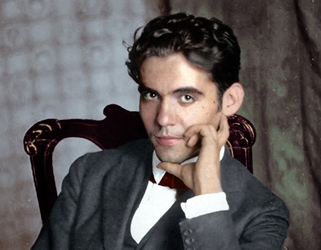

From his childhood in Andalusia, Lorca was immersed in the region’s rich cultural tapestry. The Andalusian landscapes, with their olive groves, mountains, and flamenco traditions, became an inexhaustible source of inspiration for him. He studied in Granada before moving to Madrid in 1919, where he joined a circle of intellectuals that included Salvador Dalí and Luis Buñuel.
Lorca had a distinctive poetic style that blended the traditional with the modern. His works often delved into themes of love, death, and longing and were deeply rooted in Spanish folklore and culture. While his poems are known for their lyricism and emotivity, they also addressed social and political issues, especially concerning oppression and freedom.
One of his most renowned works is “Gypsy Ballads,” a collection of poems published in 1928 that centers on the life and culture of Andalusian gypsies. Through these verses, Lorca not only celebrates the rich gypsy heritage but also critiques the marginalization and persecution they faced.


In addition to his poetry, Lorca is celebrated for his plays, notably “Blood Wedding,” “Yerma,” and “The House of Bernarda Alba.” These works, often classified as rural tragedies, tackle themes of passion, fate, and societal repression. Through his characters, especially his female protagonists, Lorca examines the tensions between individual desire and societal expectations.
Despite his literary success, Lorca’s life was marked by the political turbulence of 1930s Spain. Openly homosexual and with socialist leanings, he found himself in peril when the Spanish Civil War erupted in 1936. That same year, under circumstances still shrouded in mystery, Lorca was arrested and executed by Francoist forces.
Lorca’s untimely death at 38 was a profound loss to global literature. However, his legacy endures. His works continue to be studied, performed, and celebrated worldwide, and his life and death have become symbols of the struggle for freedom and artistic expression.
Lope de Vega: The Prolific Bard of the Spanish Golden Age
Lope Félix de Vega Carpio, commonly known as Lope de Vega, born in 1562 in Madrid, is a towering figure in Spanish literature. His vast body of work, encompassing both poetry and drama, and his innovative approach to playwriting, earned him the title “The Phoenix of Wits” among his contemporaries.
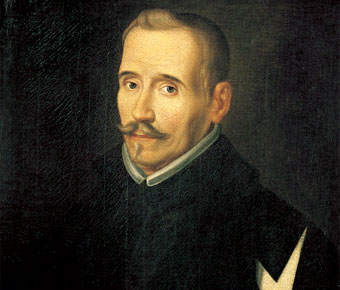

Lope’s early life was marked by a thirst for knowledge. He attended the University of Alcalá, showing an early inclination towards literature. However, his life was anything but straightforward. Lope faced personal tragedies, love affairs, and professional rivalries, all of which deeply influenced his writings.
Lope’s writing style was revolutionary for his time. He broke away from the rigid Aristotelian norms of playwriting, introducing a more flexible approach that resonated with the masses. His plays often mixed comedy and tragedy, reflecting the complexities of human emotions. Lope believed in writing for the people, and his plays were filled with relatable characters, from nobles to commoners, each portrayed with depth and authenticity.
His most famous work, “Fuenteovejuna,” is a testament to his genius. Based on a historical event, the play tells the story of a village’s collective revolt against an oppressive ruler. Lope masterfully blends social commentary with drama, making “Fuenteovejuna” a timeless piece that speaks to the power of unity.


Beyond drama, Lope was also a prolific poet. His sonnets, elegies, and epic poems are celebrated for their lyrical beauty and emotional depth. His poetic works often explored themes of love, faith, and personal reflections, showcasing his versatility as a writer.
Lope’s personal life was as dramatic as his plays. He had numerous love affairs, which often found their way into his writings. He faced excommunication, was involved in various scandals, and even served a prison sentence. Later in life, following personal tragedies, including the loss of his beloved son, Lope turned to religion, becoming an ordained priest. However, this did not diminish his literary output.
Despite facing criticism from some literary circles for his departure from classical norms, Lope’s popularity never waned. He penned over 500 plays, of which around 300 survive today, making him one of the most prolific playwrights in history.
Lope de Vega passed away in 1635, but his legacy is immortal. He transformed Spanish theater, making it more accessible and reflective of human experiences. His works continue to be performed and studied, bearing testimony to his unparalleled contribution to literature.
Miguel de Unamuno: The Philosopher-Poet of Modern Spain
Miguel de Unamuno y Jugo, born in 1864 in Bilbao, Spain, is a multifaceted figure in the annals of Spanish literature and philosophy. A prolific writer, poet, playwright, and essayist, Unamuno’s works are characterized by a deep exploration of the human psyche, the nature of existence, and the eternal conflict between faith and reason.
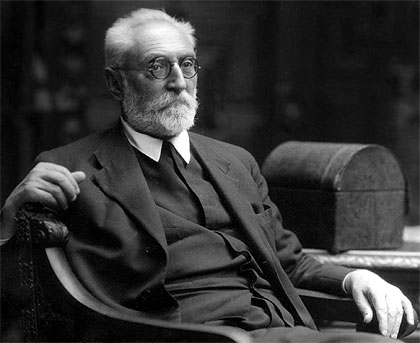

Growing up in the Basque region, Unamuno was exposed to a rich blend of Spanish and Basque cultures. He pursued his higher education at the University of Madrid, where he delved into philosophy and philology. His academic prowess led him to become the rector of the University of Salamanca, a position he held with intermittent interruptions due to his political stances.
Unamuno’s writing style is introspective and often challenges conventional beliefs. He was a leading figure in Spain’s Generation of ’98, a group of intellectuals who sought to rejuvenate Spanish culture and identity after the country’s defeat in the Spanish-American War. This generation was marked by its critical examination of Spain and its quest for cultural and intellectual renewal.
One of Unamuno’s most celebrated works is “Tragic Sense of Life,” an introspective exploration of the human soul’s existential struggles. In this philosophical treatise, Unamuno grapples with the concepts of life, death, faith, and reason. He posits that the very essence of being human is rooted in contradictions, particularly the conflict between the intellectual desire for immortality and the emotional acceptance of mortality.


Beyond philosophy, Unamuno was also a gifted poet and playwright. His poems are marked by a raw emotional intensity, often delving into themes of love, despair, and existential angst. His plays, on the other hand, are dramatic representations of philosophical dilemmas, with characters caught in the web of existential crises.
Unamuno’s life was not without controversy. His outspoken views, especially his criticism of both the monarchy and the dictatorship, led to periods of exile. However, these experiences only deepened his introspection, leading to some of his most profound works.
His later years were marked by his vocal opposition to the rise of fascism in Spain. In a famous confrontation at the University of Salamanca in 1936, Unamuno publicly denounced Francisco Franco’s regime, leading to his house arrest. He passed away later that year, but not before leaving an indelible mark on Spanish literature and philosophy.
Juan Ramón Jiménez: The Lyrical Voice of Andalusian Poetry
Juan Ramón Jiménez, born in 1881 in Moguer, a small town in Andalusia, Spain, is a luminary in the realm of Spanish poetry. His profound connection to the Andalusian landscapes, combined with his introspective nature, gave birth to some of the most evocative and lyrical verses in Spanish literature.
From a young age, Jiménez displayed an innate sensitivity and a proclivity for poetry. The verdant meadows, serene rivers, and the vast skies of Andalusia deeply influenced his poetic imagination. However, his life was not devoid of personal challenges. He grappled with bouts of depression, which, paradoxically, also became a wellspring for his poetic expressions.
Jiménez’s poetry is characterized by its simplicity, purity, and profound emotional depth. He was a master of capturing fleeting moments, emotions, and landscapes in verses that resonated with a universal appeal. His style evolved over the years, moving from modernist influences in his early works to a more stripped-down, essentialist approach in his later poems.
One of his most beloved works is “Platero y Yo” (“Platero and I”). This narrative poem is a poignant exploration of the relationship between the poet and Platero, a small donkey. Through a series of vignettes, Jiménez paints a vivid picture of Andalusian life, with its joys, sorrows, and the ever-present beauty of nature. The simplicity of the narrative, combined with its profound emotional resonance, has made “Platero y Yo” a classic in Spanish literature.
Beyond his poetic endeavors, Jiménez was also a mentor to younger poets and played a pivotal role in shaping the trajectory of 20th-century Spanish poetry. He was deeply involved in literary circles and was instrumental in promoting the works of emerging poets.
In recognition of his outstanding contribution to literature, Juan Ramón Jiménez was awarded the Nobel Prize in Literature in 1956. The Nobel committee lauded his lyrical poetry, which, in the words of the committee, constituted “a lofty example of modernity in the Spanish language.”
Jiménez’s life journey came to an end in 1958 in Puerto Rico, where he had lived for several years. However, his poetic legacy continues to inspire and touch the hearts of readers worldwide.
Also read about: Top Theatres in Spain: A Must-See Guide in your Journey
Spanish Contemporary Literary Titans: Voices of the Modern Era
In the vibrant tapestry of Spanish literature, the modern era has seen a surge of voices that deftly blend traditional themes with contemporary sensibilities. Among these, three authors have particularly distinguished themselves, not only for their literary prowess but also for their keen insights into Spain’s socio-cultural landscape.
Javier Marías, a Madrid-born novelist, stands as a beacon of postmodernism in Spanish literature. His intricate narratives, often weaving themes of love, death, memory, and betrayal, have captivated readers worldwide. His trilogy “Your Face Tomorrow” is a testament to his deep exploration of human nature and relationships. Marías’ prose, characterized by its musical structure, offers an introspective journey, with long, winding sentences that delve deep into the psyche of his characters.
Almudena Grandes, another gem from Madrid, has carved a niche for herself with novels set against Spain’s tumultuous history. Her stories, poignant tales of love, loss, and resilience, resonate with historical and emotional depth. “The Ages of Lulu” stands out among her works, boldly exploring themes of sexuality and identity. Grandes’ writing style is richly descriptive, painting vivid pictures that immerse readers in her world. Her characters, often caught in personal dilemmas amidst larger socio-political issues, are a reflection of her keen observational skills.
Dolores Redondo, hailing from San Sebastián, brings a fresh perspective with her thrilling narratives. Best known for “The Baztán Trilogy,” Redondo’s stories are set in the mesmerizing landscapes of the Basque Pyrenees. Her mastery in blending crime fiction with psychological depth has garnered her a vast readership. The atmospheric settings in her novels, especially the haunting Basque region, add a unique dimension to her stories, making them both suspenseful and deeply evocative.
Together, these authors represent the pinnacle of contemporary Spanish literature. Their works, deeply rooted in Spanish culture and history, have a universal appeal that transcends borders, making them beloved figures in the global literary arena.
Also read about: Spanish Comics Unveiled: The Legacy of Mort & Phil, Zip and Zap, Hooky, and More
The Influence of Society and Politics on Spanish Literature: A Deep Dive into Historical Interplay
The intricate relationship between Spanish literature and the nation’s socio-political dynamics offers a profound lens into the heart and soul of Spain. As we delve deeper into this relationship, it becomes evident that every literary movement, every epoch, and every narrative has been a reflection, and often a critique, of the societal and political zeitgeist of its time.
In the Medieval Era, the Reconquista wasn’t just a military reconquest; it was a cultural and religious resurgence. The literature of this period, dominated by religious fervor, was more than just tales of valor. Works like the “Cantar de Mio Cid” encapsulated the collective aspirations of a society yearning to reclaim its land and identity. These texts weren’t mere chronicles of battles; they were symbolic narratives of a nation’s quest for cultural and religious autonomy.
The Renaissance in Spain was not just an era of artistic and cultural revival. It was a period of national self-awareness. As Spain began to emerge as a formidable global power, its literature started reflecting a newfound confidence. The works of Garcilaso de la Vega and Fernando de Herrera weren’t just poetic expressions; they were assertions of Spain’s linguistic and cultural prowess in a rapidly changing world.
The Golden Age is often hailed as the zenith of Spanish literary creativity. But beneath the surface of its literary masterpieces lay a society grappling with its own contradictions. While Cervantes’ “Don Quixote” is celebrated as a timeless tale of chivalry and idealism, it’s also a subtle critique of a society torn between its lofty ideals and harsh realities. The omnipresent shadow of the Spanish Inquisition during this period added another layer of complexity. The tension between artistic freedom and religious orthodoxy became a recurring theme, with writers often resorting to allegory and metaphor to navigate the treacherous waters of censorship.
The transition to Enlightenment and Romanticism was not just philosophical; it was deeply political. The literature of this period was a reflection of Spain’s internal struggles. The rationalism of the Enlightenment, championed by writers like Benito Feijoo, was a response to the dogmas of the past. In contrast, the passionate outpourings of the Romantics, epitomized by José de Espronceda and Mariano José de Larra, were reactions to the political upheavals of their time. Their works were not just literary expressions; they were political statements.
The 20th Century brought with it unprecedented challenges. The Spanish Civil War and the subsequent Francoist regime left deep scars on the Spanish psyche. Literature became a medium of resistance. Writers like Miguel Delibes and Carmen Laforet, while constrained by censorship, found innovative ways to critique the authoritarian regime. Their narratives, often layered with symbolism and subtext, became acts of subtle defiance.
In Contemporary Spain, as the nation grapples with issues like regionalism, globalization, and evolving gender dynamics, its literature continues to be at the forefront of societal discourse. The works of modern authors, from the introspective narratives of Javier Marías to the feminist critiques of Laura Freixas, are not just stories; they are dialogues with society.
FAQs about Spanish Literature
1. What is Spanish literature? Spanish literature refers to written or spoken material produced in Spain, encompassing a range of genres from epic poetry and plays to novels and essays. It reflects the rich history, culture, and diverse influences of the Spanish people.
2. Who are some of the most notable Spanish authors? Notable Spanish authors include Miguel de Cervantes, Lope de Vega, Federico García Lorca, and Javier Marías, among many others.
3. What is “Don Quixote” and why is it significant? “Don Quixote” is a novel written by Miguel de Cervantes, published in the early 17th century. It is considered one of the world’s first modern novels and is a cornerstone of Western literature. The story follows the adventures of Don Quixote and his squire, Sancho Panza.
4. Can you name some famous Spanish poets? Famous Spanish poets include Federico García Lorca, Antonio Machado, Gustavo Adolfo Bécquer, and Rosalía de Castro.
5. What are the major literary movements in Spain? Spain has seen various literary movements, such as the Renaissance, the Baroque, Romanticism, Realism, the Generation of ’98, and the Generation of ’27.
6. How did the Spanish Civil War impact literature? The Spanish Civil War (1936-1939) had a profound impact on Spanish literature. Many writers were directly involved in the war, and their experiences influenced their works. The war also led to the exile of numerous intellectuals and writers.
7. Are there any notable contemporary Spanish authors? Yes, contemporary Spanish authors like Javier Marías, Almudena Grandes, and Arturo Pérez-Reverte have gained international acclaim.
8. What role did Spain play in the development of theater? Spain has a rich theatrical tradition, with playwrights like Lope de Vega, Pedro Calderón de la Barca, and Tirso de Molina being instrumental in the development of Western theater, especially during the Spanish Golden Age.
9. How has Spanish literature influenced global literature? Spanish literature, especially works like “Don Quixote,” has had a profound influence on global literature. Many literary concepts, themes, and styles originating from Spain have been adopted and adapted by writers worldwide.
10. Where can I learn more about Spanish literature? Many universities offer courses on Spanish literature. Additionally, various online platforms, books, and literary journals delve into the subject. Visiting Spain and exploring its libraries, bookstores, and literary festivals can also provide deeper insights.
The Dominance of Novels and Plays: Spain’s Preferred Literary Forms
In the vast landscape of Spanish literature, certain literary forms have consistently stood out, capturing the imagination of readers and reflecting the nation’s cultural ethos. Among these, novels and plays have been the most dominant, each offering a unique lens into the Spanish psyche and societal dynamics.
Novels: Windows into the Spanish Soul
The novel, as a literary form, has been a cornerstone of Spanish literature. Its ability to weave intricate narratives, delve deep into characters’ psyches, and offer a panoramic view of society has made it immensely popular among Spanish readers. From the picaresque tales of the 16th and 17th centuries, like “Lazarillo de Tormes”, to the Realist masterpieces of Benito Pérez Galdós in the 19th century, and the contemporary works of authors like Javier Marías, the novel has been a mirror to Spain’s evolving identity.
Several factors contribute to the novel’s dominance in Spain. Firstly, its flexibility as a form allows for a wide range of expressions – from historical epics and societal critiques to intimate character studies. Secondly, the novel’s expansive nature offers authors the canvas to explore complex themes, societal dynamics, and intricate character developments, making it a preferred choice for many of Spain’s literary giants.
Plays: The Pulse of Spanish Society
While novels offer introspective journeys, plays capture the vibrancy, drama, and immediacy of life. Spain has a rich theatrical tradition, with its roots in the medieval religious plays and the Golden Age masterpieces of Lope de Vega and Calderón de la Barca. The theater has always been a reflection of Spain’s societal dynamics, political upheavals, and cultural shifts.
The popularity of plays in Spain can be attributed to several factors. The communal experience of theater, where audiences come together to witness a shared narrative, resonates deeply with the Spanish ethos of community and shared experiences. Additionally, plays, with their immediacy and visual elements, offer a direct engagement with themes, making them impactful and resonant.
Modern Spanish theater, with playwrights like Antonio Buero Vallejo and Fernando Arrabal, continues to push boundaries, exploring themes of existentialism, politics, and societal critiques. The theater remains a space for dialogue, reflection, and societal commentary, making it a vital part of Spain’s cultural fabric.
Also read about: 10 Best Spanish Films & Movies to Watch and Learn Spanish in the Process
Getting to the end…
The literary landscape of Spain is as diverse and dynamic as its geography. From the snow-capped peaks of the Pyrenees to the sun-kissed shores of Andalusia, the stories penned by Spanish writers capture the essence of the nation’s soul. Their works, a blend of tradition and innovation, continue to inspire generations, fostering a global appreciation for Spanish literature. As we turn the pages of their books, we are not just reading stories; we are embarking on a journey through Spain’s rich literary heritage, discovering the heart and soul of a nation through its writers.
